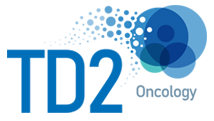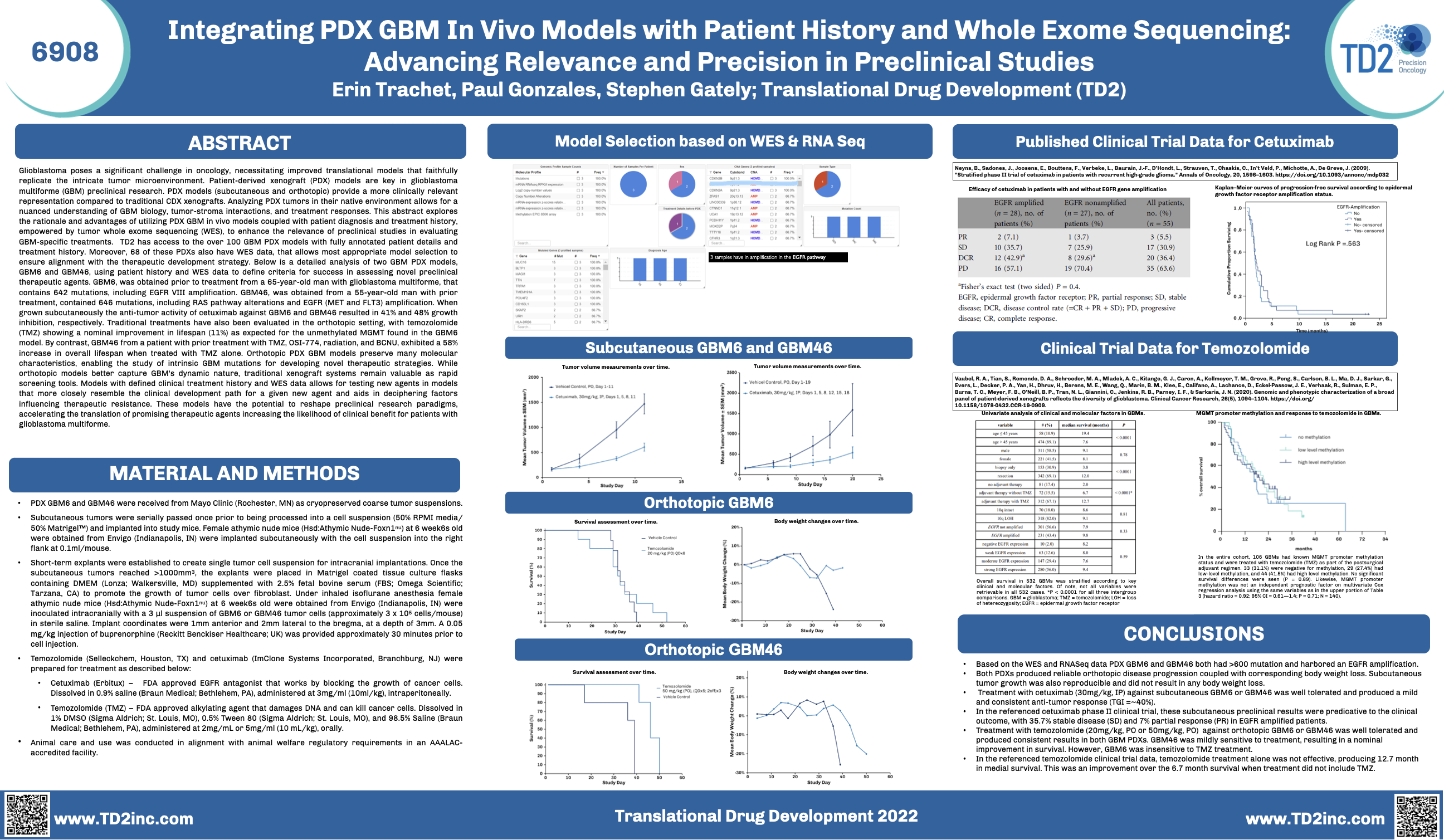The fight against Glioblastoma multiforme (GBM), one of the most aggressive forms of brain cancer, hinges on the development and use of advanced preclinical models. The significance of patient-derived xenograft (PDX) models in preclinical cancer research cannot be overstated. These models stand out for their ability to replicate the human tumor microenvironment, a capability that is crucial for understanding GBM's complex biology and for testing potential treatments.
Highly characterized GBM PDX models, such as those presented by Translational Drug Development (TD2) in the AACR 2024 poster session, are pivotal in bridging the gap between laboratory findings and clinical applications. TD2's study, featuring over 100 highly characterized GBM PDX models, underscores the transformative impact of these models in preclinical cancer research. These models are comprehensive systems that incorporate detailed patient histories, treatment records, and whole exome sequencing (WES) data. This rich characterization ensures that each model provides a precise and relevant context for evaluating new therapeutic strategies.
The TD2 poster, abstract #6908, presents the practical applications of these models through an in-depth analysis of two specific PDX models: GBM6 and GBM46. These models, derived from patients at different stages of treatment, showcase the diversity and complexity inherent in GBM cases. The inclusion of WES data in these models enables the selection of the most appropriate model for each therapeutic strategy, ensuring that preclinical trials are as relevant and informative as possible.
GBM6 and GBM46 not only demonstrate the genetic and molecular diversity of GBM but also reveal how different treatments can impact tumor growth. The effectiveness of cetuximab and temozolomide in these models provides valuable insights into how certain therapies might perform in clinical settings. This is particularly important for GBM, where treatment responses can vary dramatically among patients.
The orthotopic PDX models used in the study maintain the molecular integrity of the original tumors, enabling a deeper understanding of the disease and the development of more targeted therapies. Such models are essential in a landscape where rapid and efficient screening is critical for the advancement of cancer treatment.
In conclusion, TD2's research highlights the essential role of highly characterized GBM PDX models in preclinical cancer research. These models offer a more relevant platform for testing new treatments, bringing us closer to the goal of personalized medicine in the fight against GBM.



